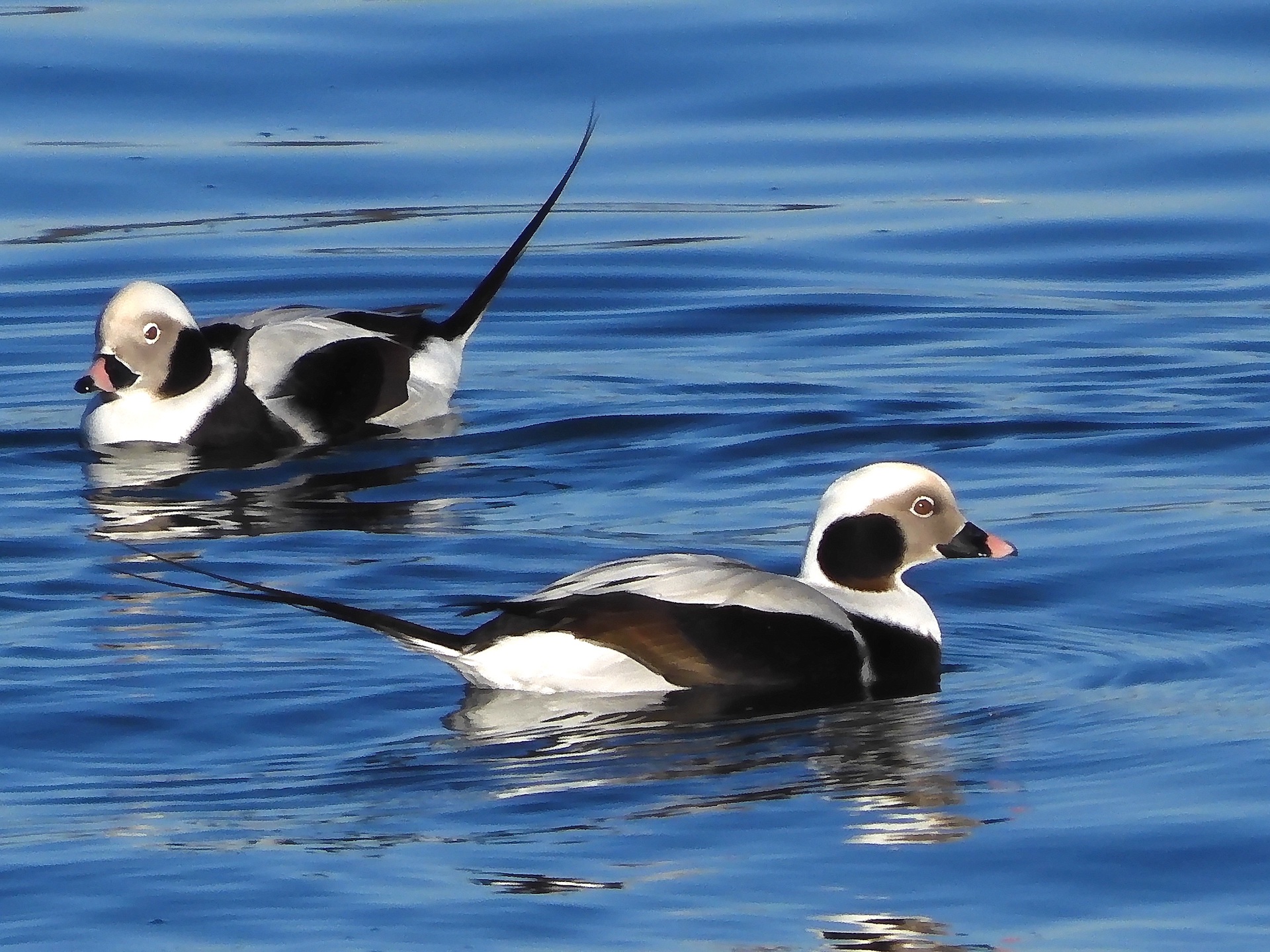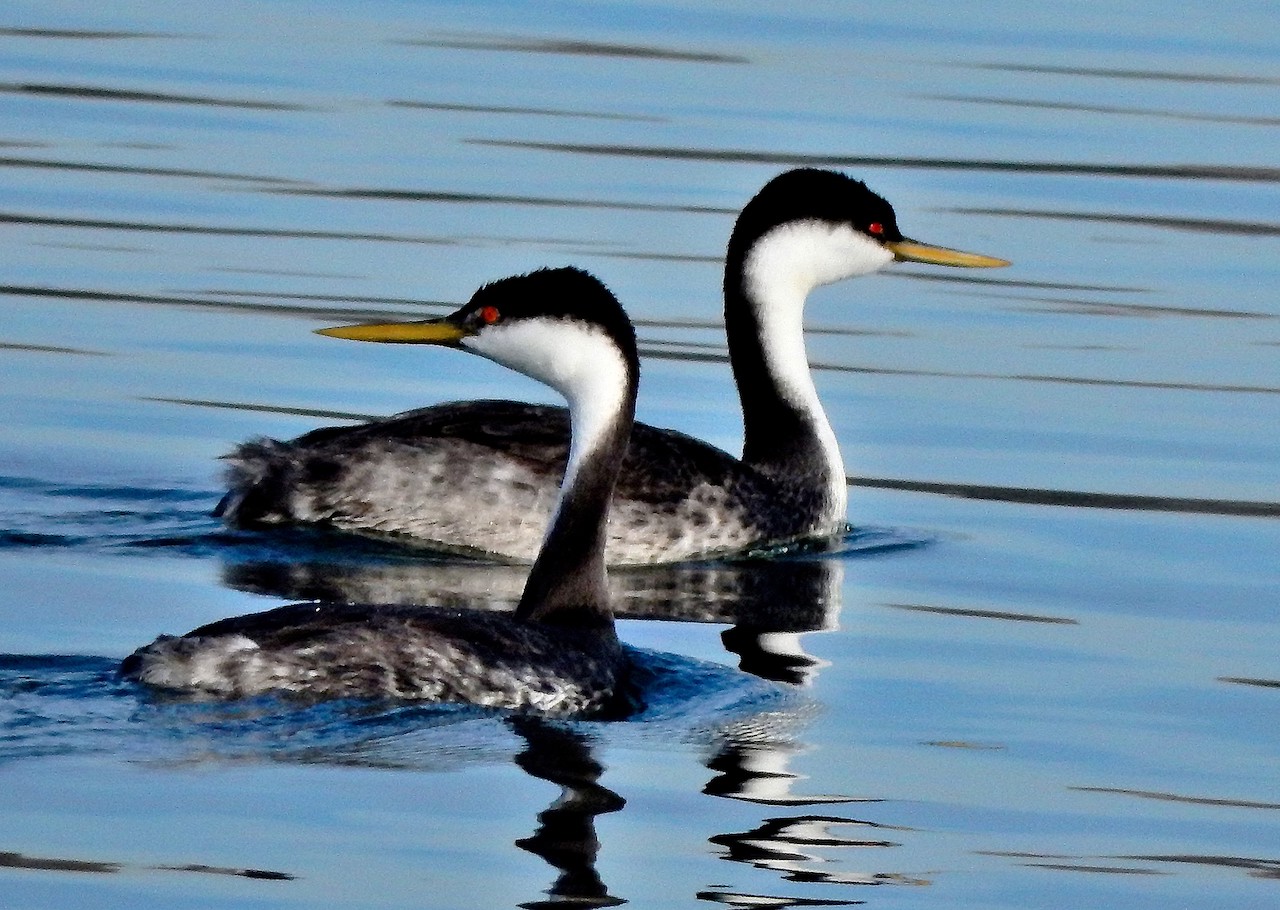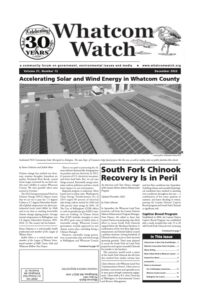by Joe Meche
It goes without saying that the November rains and colder temps heralded a most dramatic shift from fall into early winter. It’s the seasonal transition that you should be used to if you’ve lived in the Pacific Northwest for any length of time. Late October winds took care of many of the lingering leaves, and the heavy rain of early November helped to raise flood warnings in the lower elevations along with the expected avalanche dangers in the mountains. Though climate change is exacerbating the extremes in weather, the calendar says it’s the time of year to begin thinking about layers.
No matter your level of interest in watching birds, your primary concern should be about your own comfort while spending time where the birds are. They’re quite used to and well adapted in dealing with adverse conditions. The quickest way for a bird-watcher to ruin a day in the field is to be unprepared for the capricious nature of the weather gods. I remember being lovingly layered by my mom, and, of course, shedding most of it by the end of the trek to school. As an adult and perhaps a bit after the fact, I value her lessons. It’s a variation on dressing for success.
With the main concern and a bit of lecturing out of the way, we should talk about the avian riches that are arriving as I type in mid-November. The sheer numbers of birds that winter in Whatcom County often border on legendary in many bird- watching circles. Birds that we might take for granted are much sought after by birders in the more populous areas to the south. One bird in particular, the long-tailed duck, is a reliable sighting in the open waters near the Canadian border and as far south as Samish Bay. The accompanying sea birds like loons, grebes, scoters, mergansers, and goldeneyes are life list targets for many birders.
For those who might not be aware or for those who need to be reminded, the Drayton Harbor/Semiahmoo Bay area is considered a premier winter birding hotspot in Washington state. In fact, it was one of the top-rated sites on the first round of Important Bird Areas in the state. In addition, it anchored the first loop of the Great Washington State Birding Trail. This area is right on the international border and provides ideal resting and foraging habitat for a number of marine species.
As you’re looking at a map of the county, the primary habitat types are pretty obvious and integral components as you plan your day in pursuit of our winged wonders. Whether you choose to stay closer to saltwater or fresh is a personal choice. As the days get shorter, it’s more difficult to cover as much territory as you’d like, so my advice would be to pick one or the other … no need to make your day more difficult. There is more detailed information available on the best sites for bird-watching in Whatcom County at www.northcascadesaudubon.org. From the home page, click on the Birding menu and choose Locations. I put this page together over 20 years ago and it still works!
My choice usually leans toward the saltwater shorelines where I start early in the day at Blaine. If you cross the tracks and stay on Marine Drive, you will find ample parking at the end of the road to explore one of the best vantage points for seabirds. An easy walk that is also wheelchair accessible takes you to the Jorgensen Pier where you have a wide view of the channel that separates Blaine harbor from the Semiahmoo Spit. The channel is the entrance to the expanse of Drayton Harbor and all the avian traffic funnels through this relatively narrow passage. A drive around Drayton Harbor offers a different perspective from Semiahmoo.
It’s quite possible to spend an entire day in this one area … and I have! Should you choose to keep moving, however, Birch Bay and points south are waiting. Birch Bay is often one of the best places to observe wintering flocks of brant, the unique species that often serves as an avian barometer of the state of their preferred habitat. This small sea goose is not as resilient of the Canada goose and is susceptible to adverse changes in its wintering habitat. The same potential for brant and other waterfowl species exists in the open areas of Lummi Bay.
Leaving the brant behind in the northern reaches, similar shoreline habitats and viewpoint continue all the way to the county line at Larrabee State Park. Bellingham Bay itself is a frequent hot spot for many of the same species that we see up north, but with more stops for coffee and treats along the way. As important as layers are in winter, it’s also in your best interest to remain properly fueled.
Shifting our focus inland to the varied agricultural and freshwater venues, a good day begins on the northern reaches where thousands of snow geese and swans gather to forage in the open areas around Lynden, Everson, and Sumas. A week before this writing, I observed more than 10,000 snow geese and good numbers of swans in the fields during the day and on Wiser Lake, which they utilize for their night roosts. As you head south, plan to check all lakes and ponds along with the forested habitats of Bellingham’s amazing array of city parks, most notable of which is Whatcom Falls Park.
In mid- to late December and depending on the salmon runs and river levels, bald eagles will gather on the upper reaches of the Nooksack River to begin their annual winter feeding. The magic spot for observing this seasonal tradition is the bridge that spans the river on Mosquito Lake Road. Don’t expect to be there alone, however. It’s a well know gathering place for bird-watchers like you and me.
No matter where you choose to spend time during the winter months, you won’t be disappointed if you visit any of the locations on the map I alluded to earlier. Be sure to take appropriate food and drink and remember to add whatever layer(s) you find necessary.
______________________
Joe Meche is a past president of the North Cascades Audubon Society and was a member of the board of directors for 20 years. He has been watching birds for more than 60 years and photographing birds and landscapes for more than 40 years. He has written over 200 columns for Whatcom Watch.






























